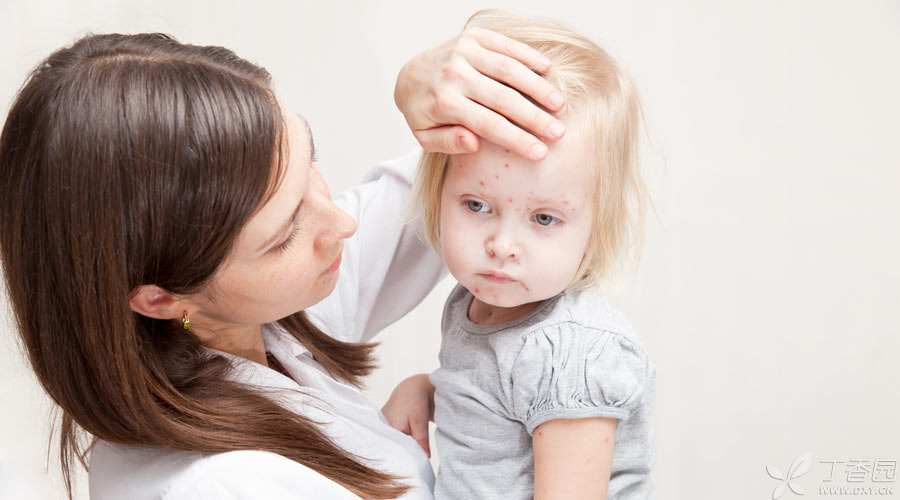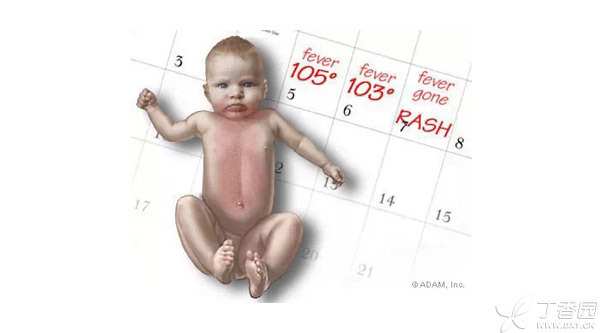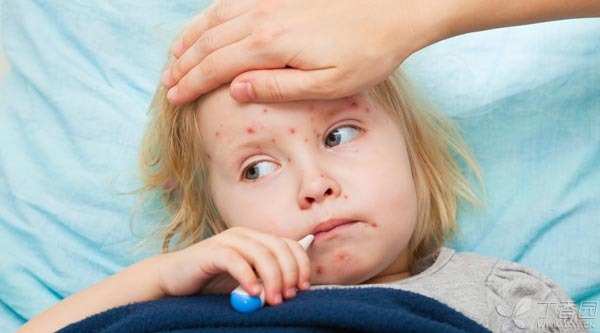
Doby’s First Fever
Doby experienced his first fever in 9.5 months. Two days after the fever, he saw Dr. Yuan Quan of Zhuo Zheng’s Department of Pediatrics.
Doctor Yuan listened to the heart and lung, examined the ear, nose and throat and other parts, and found that only the lymph nodes behind the occipital were swollen and there was no other abnormality. He was in good mental state and highly suspected of infantile rash. We did not draw blood for examination, hoping to continue to observe the children. If the fever lasted for 72 hours, there was no fever reduction and follow-up.
Generally speaking, children’s acute rash will continue to have fever for 3-5 days. Dr. Yuan prescribed Tylenol and told them to take drugs according to the child’s weight in case of high fever.
The diagnosis of acute rash in young children usually needs to wait until the pediatrician can make a diagnosis after [fever is removed from the rash]. Therefore, Dr. Yuan suggested that we should observe whether there is a rash after fever before the diagnosis can be made. Dr. Yuan told us that the rash will start to occur within 24 hours of fever reduction, mainly concentrated in the chest and abdomen, and also stressed that if the rash occurs at the same time of fever, it also needs to be followed up.
On the second night back, I still had a high fever to about 39.5 ℃, and used antipyretic drugs to suit my symptoms. Doby’s mental state is not good when he is in high fever, and he returns to normal after antipyretic, so I am not very worried.
On the 3rd day, Doby did not have any fever after taking antipyretic drugs for a high fever, and sporadic red rashes appeared on his chest and back.
Understand Children’s Emergent Rash Together
Roseola, also known as rose rash and rose rash, is common in children under 2 years old and mostly occurs in children aged 6-15 months.
This is often the baby’s first fever, and most children will basically get it once before going to kindergarten.
- Cause of disease: Human herpesvirus type 6 is the most common virus causing acute rash in young children. It may also be caused by human herpes virus type 7, enterovirus, adenovirus, parainfluenza virus, etc. Occurrence time: Infant rash can occur all the year round, most cases are sporadic, and no source of infection can be found. Transmission route: Infant rash can be transmitted through respiratory secretions and saliva, such as sharing the same cup.
It usually takes 1-2 weeks for children to develop symptoms after contracting the virus. It is also possible that children have developed rose rash, but it is too mild to be found.
Typical Symptoms of Infantile Ezema
In addition to the discomfort caused by high fever, children are usually in a good mental state. Fever usually lasts for 3-5 days, and rash occurs after fever is reduced.
Fever
Rose rash is usually accompanied by sudden high fever, often higher than 39.4 ℃.
Some children will be accompanied by slight sore throat, runny nose or cough, and some will be accompanied by swollen neck lymph nodes. Fever usually lasts for 3-5 days and then suddenly improves.
Red rash
It is usually [hot eruption].
Rashes are usually small red dots or small red spots. These rashes do not protrude from the surface. They often originate in the chest, back and abdomen, then spread to the neck and arms, and may also appear on the legs and face. Rashes are usually not itchy and sometimes have blisters.
The rash usually lasts for 1-2 days and occasionally disappears within 2-4 hours.
Other concomitant symptoms
Fatigue, irritability, mild diarrhea, runny nose, decreased appetite and swollen eyelids. About 1/4 of infants will have anterior fontanelle bulge, causing doctors to worry about meningitis.

Scientific therapy
For the vast majority of children, children’s rash is a disease that can be cured by themselves. It only needs symptomatic treatment and does not need to deal with children’s rash.
Rest more and rehydrate more.
Encourage children to rest and drink appropriate water. If you are drinking breast milk, you can drink more milk before, on the one hand, you can supplement water, on the other hand, you can absorb the immune components of breast milk.
Cooling down
According to the doctor’s advice, take antipyretic drugs according to the child’s weight, ibuprofen or acetaminophen can be used. However, antipyretic drugs should only be used when the child is uncomfortable due to fever, and antipyretic drugs should not be taken just to cool down.
Parents’ Questions
Q: Do you want to use antibiotics or antiviral drugs?
A: No need.
Infant rash is a viral infection, not a bacterial infection. Antibiotics are ineffective. Antibiotics have no effect on viral infection!
If you go to the hospital, the hospital may prescribe various antiviral drugs for you, such as ribavirin, never use them! It has no other effect except toxic and side effects.
Q: Do you need medication for a rash?
A: No need.
Because the rash of children’s rash is not itchy and will not cause discomfort to children, wait patiently for it to subside.
Q: Can you bathe the baby?
A: Yes.
No matter when you have fever or rash, you can take a bath.
Q: Could it be other diseases?
A: Attention should be paid to children’s mental state. If they are in good spirits, they don’t need to worry too much.
Pay attention to whether there are other obvious symptoms. If accompanied by other symptoms, it is recommended to let the doctor check.
Rashes usually occur only after fever symptoms improve. Rashes occurring at the same time of fever may be other diseases.

When does what see a doctor?
Diagnosis of acute rash in young children is always a hindsight. Pediatricians need to wait until the rash is removed. There is no way to diagnose it during high fever. Novice parents need to test their endurance very much. Don’t believe others say fever will burn out their brains, and don’t believe that it will develop into more serious diseases without antibiotics.
The symptoms of rose rash are usually not serious, but if the following conditions require timely treatment, the doctor will judge whether there are other conditions:
-
The anal temperature of infants within 3 months exceeds 38 ℃, regardless of whether the child looks good or not.
-
Children aged 3 months to 3 years old have fever for more than 3 days.
-
If the child looks seriously ill, agitated or refuses to drink water, please see a doctor immediately.
-
The anal temperature exceeds 40 ℃ or the axillary temperature exceeds 39.4 ℃;
-
Fever causes convulsions;
-
Rash occurs when fever occurs;
-
Fever is accompanied by other underlying diseases, such as heart disease.
